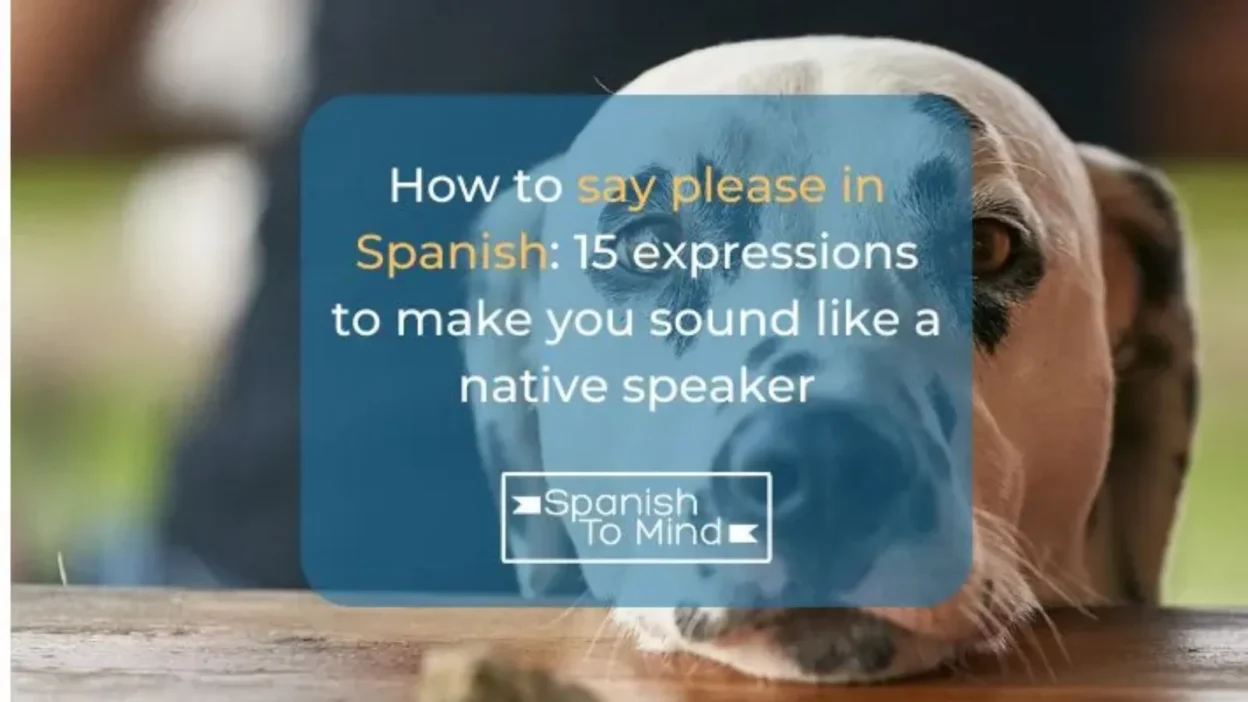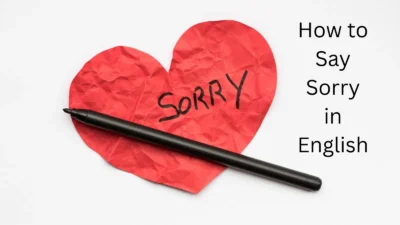If you’re learning Spanish, one of the first polite words you’ll need is how to say please in Spanish. Just like in English, saying please show respect and kindness in your conversations.
The most common way to say it is “por favor,” which is used in both formal and informal situations across Spanish-speaking countries.
Knowing how to say please in Spanish helps you make requests more politely and creates a positive impression with native speakers.
Say Please in Spanish
Learning these basics is essential to sound courteous and culturally aware.Start using “por favor” today and make your Spanish interactions more warm and respectful.
15 phrases table for How to Say Please in Spanish
🟢 = Casual | 🔵 = Polite | 🟣 = Formal
| # | Spanish Phrase | English Meaning | Tone |
|---|---|---|---|
| 1 | Por favor | Please | 🔵 Polite |
| 2 | Hágame el favor | Do me the favor | 🟣 Formal |
| 3 | Hazme el favor | Do me the favor | 🟢 Casual |
| 4 | Porfa | Please (short) | 🟢 Casual |
| 5 | Porfis | Please (cute/childlike) | 🟢 Casual |
| 6 | Porfita | Please (regional/diminutive) | 🟢 Casual |
| 7 | Se lo ruego | I beg you | 🟣 Formal |
| 8 | Te lo ruego | I beg you | 🔵 Polite |
| 9 | Con gusto | With pleasure | 🔵 Polite |
| 10 | Si es posible | If possible (please) | 🔵 Polite |
| 11 | ¿Me haces el favor? | Will you do me the favor? | 🟢 Casual |
| 12 | ¿Me haría el favor? | Would you do me the favor? | 🟣 Formal |
| 13 | Tenga la bondad | Kindly please | 🟣 Formal |
| 14 | Con permiso | Excuse me / Please allow me | 🔵 Polite |
| 15 | Le pido por favor | I kindly ask you | 🟣 Formal |
1. Por favor – The standard “please”
Origin:
Literally means “for favor” and comes from formal courtly Spanish used to request something respectfully.
Example:
👤 User A: ¿Me puedes pasar el agua, por favor?
👤 User B: Claro que sí.
Use: Universal and polite. Suitable for all contexts.
2. Porfis / Porfi – Cute or childish version of “please”

Origin:
A playful, shortened form of por favor, often used by children or in affectionate contexts in Latin America.
Example:
👤 User A: ¿Me compras un helado, porfis?
👤 User B: Solo si terminas tu tarea.
Use: Informal, sweet tone, often used by kids or in flirtatious speech.
3. Porfa – Casual “please”
Origin:
Slang variation of por favor, used in everyday speech among friends or peers.
Example:
👤 User A: Ayúdame con esto, porfa.
👤 User B: ¡Va!
Use: Informal and relaxed; not used in formal settings.
4. Hágame el favor de… – “Would you kindly…”
Origin:
Used in Colombia and parts of Central America. It literally means “do me the favor of…”
Example:
👤 User A: Hágame el favor de cerrar la puerta.
👤 User B: Con mucho gusto.
Use: Formal and polite; often used in service or professional settings.
5. Te lo pido por favor – “I ask you, please”
Origin:
A more emphatic version of por favor that adds emotional or serious tone.
Example:
👤 User A: Te lo pido por favor, no llegues tarde otra vez.
👤 User B: Está bien, lo prometo.
Use: When making earnest or heartfelt requests.
6. Se lo suplico – “I beg you”

Origin:
From the verb suplicar, meaning “to beg” – very formal and emotionally intense.
Example:
👤 User A: Se lo suplico, no lo despida.
👤 User B: Veré qué puedo hacer.
Use: Formal and dramatic; used when pleading or making serious requests.
7. ¿Me harías el favor de…? – “Would you do me the favor of…?”
Origin:
Polite, conditional phrasing that softens a request, similar to “Would you mind…”
Example:
👤 User A: ¿Me harías el favor de prestarme tu libro?
👤 User B: Por supuesto.
Use: Courteous and considerate; common in written or polite conversation.
8. ¿Te importaría…? – “Would you mind…?”
Origin:
From the verb importar (“to mind/care”); a softer and respectful way to request something.
Example:
👤 User A: ¿Te importaría bajar el volumen, por favor?
👤 User B: No, para nada.
Use: Polite and indirect.
9. Con permiso – “Excuse me / May I”

Origin:
Literally means “with permission.” While not a direct translation of “please,” it functions as a polite phrase when entering a room or passing someone.
Example:
👤 User A: Con permiso.
👤 User B: Adelante.
Use: Respectful; used when interrupting, entering, or excusing oneself.
10. Tenga la bondad de… – “Would you be kind enough to…”
Origin:
A very formal phrase used in official or ceremonial Spanish.
Example:
👤 User A: Tenga la bondad de firmar aquí.
👤 User B: Con gusto.
Use: Formal and professional; often used in customer service or legal settings.
11. ¿Me puede hacer el favor? – “Can you do me the favor?”
Origin:
Used widely in Colombia and Venezuela as a courteous phrase to ask for help.
Example:
👤 User A: ¿Me puede hacer el favor de indicarme la dirección?
👤 User B: Claro, siga derecho y luego gire a la derecha.
Use: Polite and respectful; used in public interactions.
12. Si no es mucha molestia… – “If it’s not too much trouble…”
Origin:
A humble way to ask, emphasizing you don’t want to inconvenience the person.
Example:
👤 User A: Si no es mucha molestia, ¿podrías cerrar la ventana?
👤 User B: No es molestia, ya mismo.
Use: Very polite and considerate.
13. Hazme el favor – “Do me the favor”
Origin:
Informal equivalent of “Hágame el favor,” used among family or friends.
Example:
👤 User A: Hazme el favor de traerme el control.
👤 User B: Aquí tienes.
Use: Casual but respectful.
14. Un favor, por favor – “A favor, please”
Origin:
Used to gently start a request, often with a smile or friendly tone.
Example:
👤 User A: Un favor, por favor… ¿me ayudas con esta caja?
👤 User B: Claro que sí.
Use: Friendly and soft; used in casual social settings.
15. ¿Serías tan amable de…? – “Would you be so kind as to…”
Origin:
One of the most refined and polite ways to request something in Spanish.
Example:
👤 User A: ¿Serías tan amable de ayudarme con mi equipaje?
👤 User B: Con mucho gusto.
Use: Extremely polite and respectful.
FAQs
- What is the basic way to say please in Spanish?
The most common word is “Por favor.” - How do you pronounce “Por favor”?
It’s pronounced por fah-VOR. - Is “Por favor” formal or informal?
It’s neutral, and you can use it in both casual and polite situations. - Where should I place “Por favor” in a sentence?
Usually at the end — for example: Una taza de café, por favor (A cup of coffee, please). - Can I say “Por favor” at the start of a sentence?
Yes, for extra politeness — Por favor, ayúdame (Please help me). - Is “Por favor” used in all Spanish-speaking countries?
Yes, it’s universally understood across all regions. - What’s a very polite way to say please in Spanish?
You can say “Se lo ruego” or “Le pido por favor” — more formal and respectful. - Can I use “Porfa” instead of “Por favor”?
Yes, “Porfa” is a casual and friendly short form used among friends. - How do you respond when someone says please?
You can say “Claro” (Of course) or “Sí, por supuesto” (Yes, of course). - Why is saying “Por favor” important in Spanish culture?
Because politeness and respect are highly valued in Spanish-speaking countries.
Conclusion:
Now that you know how to say please in Spanish, you’re ready to speak more politely and respectfully in any situation. If you’re ordering at a restaurant or asking someone for help, saying “por favor” makes your Spanish sound more natural and courteous.
It’s a simple phrase, but it carries a lot of weight in everyday conversations. Keep practicing, and you’ll see how far good manners can take you in Spanish-speaking cultures!



